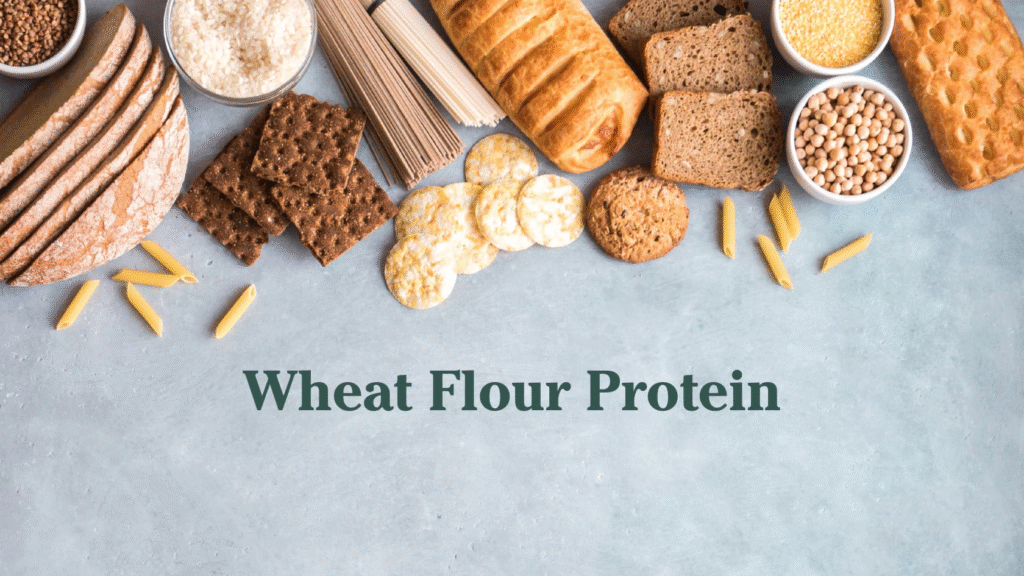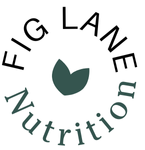When choosing wheat flours for baking or changing nutritional values, there are a lot of options! Understanding how and why there is varying nutrition facts of wheat protein content per 100g can help you make an informed decision on which to use.

The change in protein content between different wheat flours effects not only the nutrient content but, also the elasticity and texture of the product being made. Below I’ll break down the nutritional differences, protein content, uses, and more between all purpose flour, whole wheat flour, bread flour, enriched white flour, and pastry flour.
Protein Content and Nutrient Comparison of Wheat Flours (per 100g)
| Flour type | Calories | Protein* | Carbs | Fiber |
|---|---|---|---|---|
| All Purpose Flour [1] | 364 | ~ 10 g | 76.3 g | 2.7 g |
| Whole Wheat Flour [2] | 370 | ~15 g | 71.2 g | 10.6 g |
| Bread Flour [3] | 361 | ~13 g | 72.5 g | 2.4 g |
| Enriched White Flour [4] | 364 | ~10 g | 76.3 g | 2.7 g |
| Cake Flour [5] | 367 | ~7 g | 80 g | 3.3 g |
| Pastry Flour [6] | 353 | ~9 g | 76.5 | 2.9 g |
*Protein content varies between different varieties of flours but below you will get a better understanding of why this maters.
Protein Content

When talking about protein content of flours, it is often talked about in terms of percent protein. For example all purpose flour has about 10 grams of protein per 100 grams so its percent protein content is 10% (% protein content= grams of protein in 100 grams of flour/100 grams).
The protein in flour is gluten, which is a combination of two proteins, gliadin and glutenin. Gluten is what gives dough its “elasticity” and ability to hold onto air in pockets. It is also the type of protein that people with celiac disease are allergic to. Flours with a higher protein content are often used more for breads or denser baked goods, whereas flours with lower protein contents are often used for baked goods that are meant to be lighter and fluffier, like cakes.
All Purpose Flour
- Protein: ~9-12% protein content or 9-12 grams of protein per 100 grams
- Use: cookies, quick breads, pancakes, and some cakes
- Nutrition: Refined, meaning most of the fiber has been removed with the stripping of the bran and germ of the grain.
- Texture: More elasticity, not too soft
All-purpose flour is a versatile staple in most kitchens. It has a protein content between pastry and bread flours. Depending on the ratio of ingredients, it can be use to make some pastries and some breads. With moderate protein content, it can handle most at home baking needs without specialty.
Whole Wheat Flour
- Protein: ~12-16% protein content or 12-16 grams of protein per 100 grams
- Use: quick breads, pancakes, and breads
- Nutrition: Contains bran and germ; higher fiber, B vitamins, and minerals like iron and magnesium
- Texture: denser due to higher protein content and slightly higher fat content from the germ.
Whole wheat flour has all parts of the wheat grain, making it more nutritious. Its higher protein content makes it suitable for denser breads, but it can also used along with all purpose or bread flour for other bread and quick bread applications. However, because of its higher protein content, it is not always ideals for pastries and cakes as it can lead to a dense and chewy product.
Bread Flour
- Protein: ~12-14% protein content or 12-14 grams per 100 grams
- Use: Yeast breads, noodles, pastas, bagels, pizza dough, pretzels
- Nutrition: Refined flour with higher proteins (mainly gliadin and glutenin)
- Texture: Chewy, elastic crumb
Bread flour is milled from hard wheat and optimized for strong gluten development. This helps bread rise well and hold its structure, resulting in a chewy texture.
Enriched White Flour
- Protein: ~9-12% protein content or 9-12 grams of protein per 100 grams (similar to AP)
- Use: General baking
- Nutrition: Has vitamins and minerals (e.g., iron, folic acid, niacin) added back after milling to improve nutritional content and help reduce common nutritional deficiencies.
- Texture: Same as standard all purpose flour
Enriched flour is still refined, meaning the removal of the bran and germ; however, is nutritionally closer to whole wheat in some ways. This is due to the flour being enriched, which is the process of adding back in nutrients that were lost in processing. This process adds iron, thiamin, riboflavin, niacin, and folic acid but, not fiber.
Cake Flour
- Protein: 7-9% protein content or around 7-9 grams per 100 grams
- Use: pastries, delicate baked goods
- Nutrition: Lowest in protein and usually bleached for better starch gelatinization
- Texture: Fine, soft crumb
Cake flour has the lowest protein content of the group, which makes it ideal for light, airy textures. It is made from soft wheat which doesn’t have as much gluten, so it’s not suitable for bread.
Pastry Flour
- Protein: 8-10% protein content or 8-10 grams per 100 grams
- Use: Pies, tarts, biscuits, scones
- Nutrition: Lower in protein; refined
- Texture: Tender and flaky
Pastry flour fills the gap between all-purpose and cake flour. With a moderate-low protein content, it is still made from soft wheat. Its moderate to low protein content makes this ideal for pastries that need some gluten structure to trap air pockets but, delicate enough for light airy layers or a soft, tender crumb. It’s ideal for recipes where flakiness and tenderness are key, like in croissants or pie crusts.
That being said as far minimizing the flours needed at home, you can often find recipes for pie dough, biscuits, and scones that use all purpose flour.
Other forms of wheat protein
When the starch of flour is washed away, what is left is just the gluten protein content. This can be purchased in the form of vital wheat gluten. Some times it is used in baking when a higher gluten content is needed but, otherwise it is often used in vegan or vegetarian diets. Its stretchy properties are able to be formed into products with a fibrous texture that you might find from some meats. When seasoned and cooked it becomes a high-protein plant-based meat alternative.
Want to learn more about plant-forward and plant-based diets and plant-based protein check out:
Take Away
Understanding wheat protein content per 100g helps you bake better and eat smarter. Whether you’re going for nutrition, texture, or structure, the right flour makes all the difference.

Good article. I didn’t realize whole wheat flour was that much higher in protein, fiber and nutrition.
When I get wheat bread at store, some seem pretty soft, are they not as nutritious? What do I look for in the labeling to know it has the whole wheat nutrition you list and hasn’t been processed away.